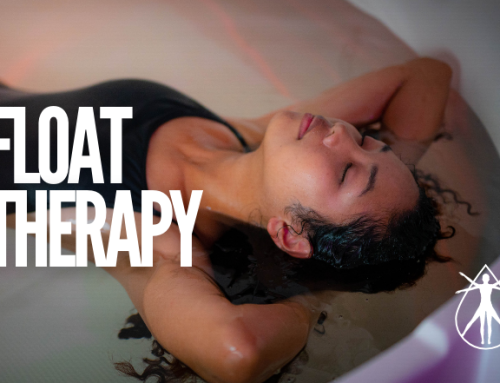
Hydrotherapy has been used for hundreds of years in many forms, from exercise to healing. There are places with unique water quality known to heal and treat diseases. Water has many properties known as minerals and salts that give it the ability to heal. The dead sea, salt lakes, and hot springs are places where water has unique qualities. Some cultures also use bathing as a ritual and religious practice.
Today, people exercise in water, and practitioners assist people with injuries and disabilities; the weightlessness of water enables people to move quickly, unlike on land with gravity. Hydrotherapy helps improve blood flow in the body, and it can soothe, calm and decrease the force of gravity to help the person feel lighter and nimbler in water.
“Being able to exercise in water often under the supervision of a physiotherapist enables weight-bearing movements that are painful or even impossible to perform on land, are made possible to perform in a purpose-built ‘hydrotherapy pool’ which is large enough to move around in and deep enough to stand comfortably in, the water temperature is warmer than a swimming pool, but not as hot as a spa pool, this provides the added benefit of a natural form of resistance.” Geoff Haberle, Physiotas, The Benefits of Hydrotherapy & How It Can Help Your Rehabilitation

Top 4 benefits of hydrotherapy
1. Improves physical health and fitness.
2. Aids in recovery from surgery and injury.
3. Allows re-education of normal movement.
4. Reduced pain compared to weight-bearing movements.
What is Float Therapy?
Float therapy is relatively new in comparison to hydrotherapy; having only been around in the last 50 years, it is generally used by one person at a time. It was known as isolation tank therapy and R.E.S.T. (Restricted Environmental Stimulation Technique) because it reduces the external stimuli of sight, sound, and temperature. Now it is called floatation therapy, and the light and sound are more of a choice if you want them on or off.

In a magnesium-rich salt solution, you float about 600kg of Epsom salts to 1,000 litres of water. Already known for treating muscular aches and pains, Epsom salts have traditionally been used in baths and were originally from the natural springs in Epsom, England. The salty solution is maintained at skin temperature, approximately 34.5 degrees Celsius 94.1 degrees Fahrenheit. Floatation therapy provides a body-mind connection where greater synergy is felt with the reduction of external sensory input, leading to better concentration, focus, meditation, visualisation, which is helpful in the treatment of Workcover injuries, sports injuries, post-surgery rehabilitation, athletic performance recovery and for the rehabilitation for people with special needs. With regular floatation therapy, your rehabilitation and recovery are vastly improved.
Top 10 benefits of floatation therapy
| Benefits | Hydrotherapy | Floatation Therapy |
|---|---|---|
| Improves physical health and fitness | ✅ | ✅ |
| Aids in recovery from surgery and injury | ✅ | ✅ |
| Allows re-education of normal movement | ✅ | ✅ |
| Reduced pain compared to weight-bearing movements | ✅ | ✅ |
| Improves sleep quality | ✅ | |
| Improves blood flow | ✅ | |
| Improves well-being | ✅ | |
| Increased focus and creativity | ✅ | |
| Reduces stress, anxiety, and depression (mindfulness) | ✅ | |
| Zero gravity effect due to the magnesium-rich solution | ✅ |
Why floatation therapy is more effective than hydrotherapy
While both floatation therapy and hydrotherapy are effective practices, floatation therapy has the edge over hydrotherapy because of how the treatment creates deep relaxation, providing physical, physiological, and mental recovery.
Floatation therapy allows transdermal absorption (through the skin) of magnesium which aids in repairing sore muscles and joints enables the body to relax while promoting a higher quality of sleep. These factors all contribute to increasing recovery speed for an injury or an illness. In contrast, hydrotherapy is usually undertaken in pools with high chlorine levels and other chemicals. Please try to have your hydrotherapy sessions in freshwater or saltwater if possible. Hydrotherapy is primarily known for its exercise benefits, but very few people understand that exercise can also be incorporated into your floatation therapy sessions, like yoga.
‘Floating Yoga’ by Shoshana Leibner at Floatdreams is being launched in 2022 and will enable people to perform yoga exercises adapted for the floatation tank environment.
Floatation therapy is hygienic, where everyone must shower before they float, which is not the practice before entering a hydrotherapy pool. Floatation therapy is for single therapeutic use; therefore, there is no risk of cross-contamination, unlike a public swimming pool, where many people use the hydrotherapy pool all at once.
Floatation therapy in Victoria has been now classified as an Essential Service. If you are under Workcover, TAC, NDIS, you can ask your case manager to have floatation therapy as a part of your recovery/rehabilitation program.
Remember to book your floatation therapy session today to enjoy the following:
• You can repair and recover your body in our therapeutically magnesium-rich solution
• A hygienic and clean environment where everyone showers before and after their session
• You can do exercises in the tank, like yoga
• It is a private therapy whereby you have your own room, shower, and floatation tank
• Enjoy the zero-gravity effect, which helps increase your oxygenation and blood flow
• It has been classified as an Essential Service by the Victorian Government
• It is deeply relaxing, providing the body more downtime to heal mentally and physically
• It is a mindful practice, providing a more significant sense of connectedness to your body and mind




